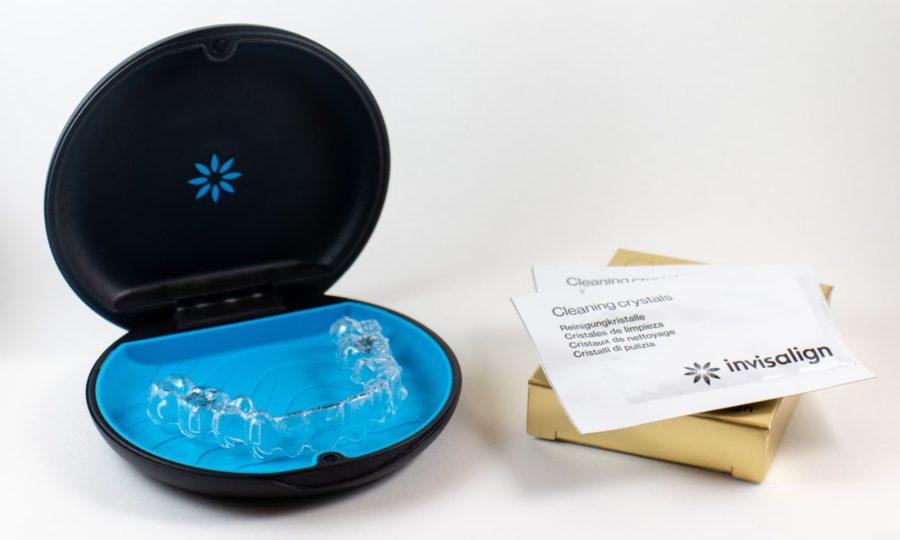Does Invisalign Hurt?
Your smile is one thing in particular that most people are conscious of, leading many to seek cosmetic dentistry. Invisalign is one solution to help you achieve a perfect smile. It’s also a popular alternative to traditional metal braces for straightening teeth.
But it doesn’t matter whether you use Invisalign or traditional braces, as both will align your teeth. While many people prefer Invisalign for its near-invisible and discreet appearance, there is often concerns of pain throughout the process.
Invisalign is not typically a painful process. However, you can expect some discomfort with adjustments. We explore Invisalign treatment and provide tips for reducing discomfort during your treatment course.
What Is Invisalign?
Invisalign is a popular choice for people seeking an alternative to traditional braces with wires and brackets. Invisalign aligners are discreet, comfortable, and convenient.
They’re an orthodontic treatment used to straighten teeth using clear, custom-made aligners worn over the teeth that gradually shift them into the desired position. Unlike traditional metal braces, Invisalign aligners are easily removable for eating, brushing, and flossing.
How Long is Invisalign Treatment?
Compared to traditional braces that may take up to 24 months, the average time for Invisalign treatment is about 12 months. During this period, you will visit your dentist on a six or eight-week schedule to check your progress and receive a new set of aligners.
Treatment length can also depend on the total number of aligners determined by your dentist to achieve straight teeth. You should wear your aligners for at least 20– 22 hours daily.
Invisalign & Discomfort
You typically don’t have pain with Invisalign. However, you can experience some mild and temporary discomfort during your first week. And most people become accustomed to the aligners in a week.
You may feel discomfort when adjustments are made or with a new set of aligners every two weeks, but this should subside within a few days as you get used to them. But there usually isn’t any pain.
If you notice pain from Invisalign, it can be due to a low pain tolerance, sensitive teeth, or sensitive gums and gingivitis. Several things can happen if you wear them for less than the recommended time:
- You can experience more discomfort when you wear them less often.
- Teeth can shift.
- Your total treatment time can be longer.
Once your Invisalign treatment is over, you will still need to wear a retainer at night to maintain straight teeth, as teeth can shift again.

Tips to Reduce Discomfort with Invisalign
Invisalign can be more comfortable than metal braces, but that doesn’t mean there’ll be no discomfort. Here are tips to help reduce discomfort with Invisalign:
- Use dental wax applied to the aligners to reduce any irritation or rubbing on the cheeks or gums.
- Use over-the-counter pain relief, such as ibuprofen or acetaminophen.
- Wear aligners for the recommended time, as taking them off can decrease your pain tolerance.
- Contact your dentist if you experience pain or discomfort for more than a few days for advice or guidance.
Benefits of Invisalign
Invisalign offers several benefits over traditional braces, including:
- Aesthetics. Clear aligners are less noticeable than metal braces.
- Removable. You can remove aligners for eating, drinking, brushing, and flossing, thus easier to maintain good oral hygiene.
- Comfortable. The aligners are made of flexible thermoplastic material and are more comfortable than traditional metal braces.
- Fewer potential problems compared to metal braces, where wires can break or brackets come off.
- Faster treatment time. In some cases, Invisalign can straighten teeth faster than traditional braces.
Invisalign Care
Even though you may get a new set of aligners every 2 weeks, caring for them ensures effective treatment and maintaining good oral hygiene. Here are some ways to properly care for your Invisalign aligners:
- You can soak your aligners in denture or retainer cleaner mixed with cold water.
- Avoid using hot water, as this can bend the plastic.
- Avoid toothpaste, as some toothpaste are abrasive and can scratch the aligners.
- You can brush your aligners with a soft-bristled brush and clear anti-bacterial soap.
- Rinse thoroughly after brushing with cool water before reinserting them in your mouth.
- Store your aligners properly in a protective case when not in use.
Invisalign for Healthy & Beautiful Smiles
If you’re concerned about Invisalign hurting, know that any orthodontic treatment to straighten teeth is an individual experience. And while Invisalign can cause some discomfort in the beginning or during the adjustments, it’s normal and usually subsides within a few days.
For questions or concerns about Invisalign, contact South Bolton Dental Centre. Or book an appointment to determine if Invisalign is the right option for you.









